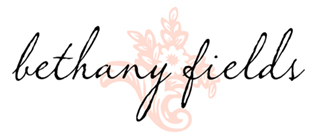The Importance of Neutrals
March 11, 2022 – Written by Bethany Fields
As a teacher, I see a lot of frustration regarding color. It’s hard to learn to “see” color and use it effectively and especially when the pastels we have are limited. As I demonstrate, students are usually surprised that the “green” they see me using (for instance) is really not very green at all! It’s a GRAYED green – or “neutral-ish” colors.
Neutral colors are muted shades that appear to lack color but often have underlying hues that change with different lighting.
Advertisement

In the painting above, I’ve highlighted areas of the piece using the exact colors (chosen via the color pick tool in Adobe Photoshop). The circles and highest “bar” are the accurate colors I’ve used. The second bar has almost the same colors – but in higher chroma, more “pure” and much more like what students have in their box. You can see the differences in subtlety and nuance and how the color choices affect the feel of the painting. It would be a much more vibrant scene had I used the purer hues!
I remember adding my first set of “gray” pastels to my palette. Adding that set of grays seemed to magically transform my work. Even with my more colorist approach to landscapes, the nuance of the grayer hues helped create depth, maturity, and sophistication I hadn’t felt before. Now, I pull generously from my gray area of my pastel box, specifically if I am wanting a more moody, local (realistic) look.
I’m still working on my palette, refining it and adding missing links, and am always drooling over specific sets available at the online shops.
A Few Favorite Gray Sets of Pastel:
In many cases, the higher the chroma, the more I save those pastels for the final touches. It’s wonderful to bring these colors in for a touch of vibrancy; these are the beautiful spots of color that make a painting sparkle! Used too generously, we can lose the more understated and sophisticated nature of our work. Think of your grayed colors as the backbone of your painting. Use them along with the armatures we’ve discussed. Those foundation layers will “hold up” your piece. Add the final layers with purer tones…be stingy with your color. It’s bossy!

It can take time to develop your pastel palette. We don’t have the option to simply mix colors together to get an entire array of values and subtlety. If you’re low on your grays, using mark-making skills (like crosshatching and gentle scumbling) can create the effect of grayed down colors. Gray is made by combining complements so very gently layering complementary colors will help. I find this is easier accomplished by using the harder pastels as they are less apt to create mud (the unfortunate result of too much pigment mixed together on your paper). You can also take the purer hue and make crosshatch style marks. This can optically dull the more vibrant colors. Just be careful and cautious as too much color mixing can create a lifeless blah color instead of the luminous gentle color you wanted.

Save this Post to Pinterest


























I’ve always loved the more neutral colors and have difficulty using the more high chroma sticks.
I love the neutrals, too! I find the higher chroma sticks to work best when paired with a more “neutral-ish” palette. 😀